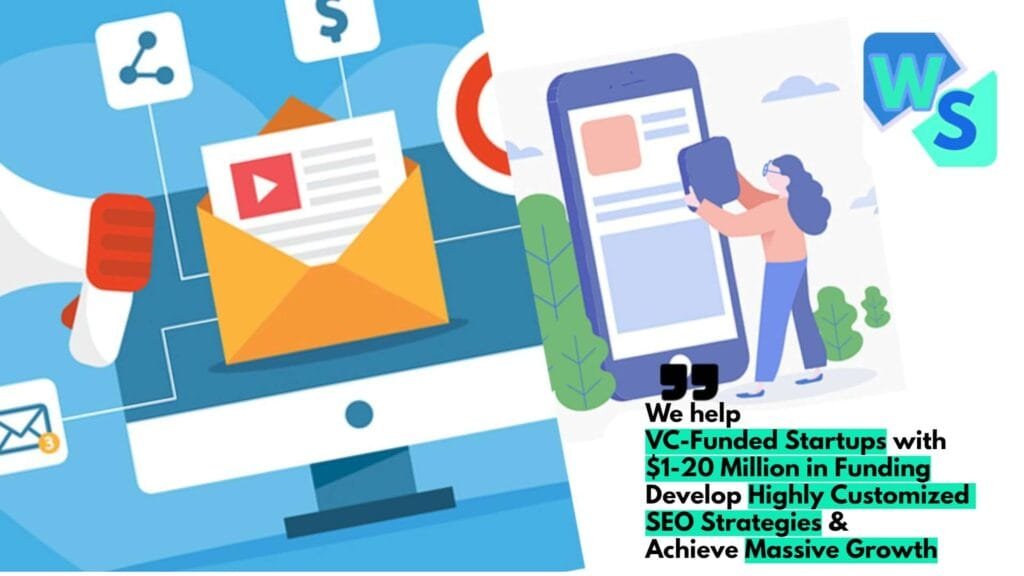The Evolution of Marketing Trends
As the landscape of marketing continues to evolve, staying informed about emerging trends is crucial for business success. Two significant components driving change in this arena are personalization and artificial intelligence (AI).
Impact of Personalization
Personalization has become a core expectation for consumers. In fact, 71% of consumers expect businesses to deliver tailored interactions, while 76% express frustration when this does not occur (Revenue Marketing Alliance). This growing demand highlights the importance of customizing marketing strategies to meet individual preferences.
Implementing recommendation engines is a pivotal aspect of personalization. These tools are projected to reach $12.03 billion by 2025, demonstrating their critical role in enhancing customer experiences. Personalized product recommendations not only elevate customer satisfaction but also facilitate upselling and cross-selling opportunities, increasing transaction value.
| Personalization Factor | Impact Percentage |
|---|---|
| Consumers expecting personalized interactions | 71% |
| Consumers frustrated by lack of personalization | 76% |
Utilizing customer data—such as behavior and purchase history—can significantly influence pricing strategies, enhancing the likelihood of repeat purchases (Revenue Marketing Alliance). By embracing personalization, you can foster stronger relationships with customers and ultimately improve your bottom line. For more insights on this topic, explore our article on personalized marketing trends.
Leveraging AI in Marketing
Artificial intelligence is transforming marketing by providing tools that enhance personalization and streamline processes. One of the prominent applications of AI in marketing is the use of chatbots, which offer custom responses and product recommendations based on user queries and behaviors (Revenue Marketing Alliance). This feature allows businesses to engage with customers in real-time, providing immediate assistance and enhancing user experience.
Additionally, AI can use patterns derived from customer data to optimize marketing strategies. This application includes adjusting product pricing to respond to market demand, which has been shown to enhance the chances of repeat business. The integration of AI tools enables marketing teams to be more agile and responsive, ensuring that campaigns are relevant and effective.
Incorporating AI into your marketing strategy not only helps in delivering personalized services but also streamlines decision-making processes. For further exploration of current technological advancements, check out our articles on digital marketing trends and emerging marketing trends. By understanding and applying these trends, you can remain competitive and drive your business forward.
Social Media Metrics and Analytics
In the realm of social media advertising trends, understanding metrics and analytics is essential for measuring the effectiveness of your campaigns. Metrics provide insights into audience engagement, reach, and the ultimate success of your marketing efforts. This section explores key social media engagement metrics, the importance of reach and impressions, and the significance of conversion rates.
Social Media Engagement Metrics
Engagement metrics are vital for analyzing how well your audience interacts with your content. These metrics include the post engagement rate, individual engagement actions such as likes, comments, retweets, shares, and video completion rates. By assessing these metrics, you can identify successful posts and improve brand connection (Sprout Social).
The following table outlines common engagement metrics and their importance:
| Engagement Metric | Description |
|---|---|
| Post Engagement Rate | Measures the percentage of your audience engaged with your content relative to total followers. |
| Likes | Reflects approval or enjoyment of a post. |
| Shares | Indicates how often users share your content, expanding its reach. |
| Comments | Gives insight into audience opinions and engagement levels. |
| Video Completion Rate | Shows the percentage of viewers who watch your videos to the end, indicating content effectiveness. |
Understanding these metrics enables you to refine your content strategy and foster a deeper connection with your audience.
Understanding Reach and Impressions
Awareness metrics such as reach and impressions are fundamental for assessing the visibility and engagement levels of your social media content. Reach refers to the total number of unique users who see your content, while impressions consider the total times your content is displayed, regardless of whether it was clicked or not.
A clear understanding of these metrics can help you gauge brand awareness and perception on social media. Here’s a breakdown of the differences between reach and impressions:
| Metric | Definition |
|---|---|
| Reach | The total number of unique users who see your post. |
| Impressions | The total number of times your post is displayed. |
These metrics provide insights into your online audience, allowing you to measure how much attention your brand receives on social media.
The Significance of Conversion Rate
Conversion rate is a critical social media metric that reflects how effectively your social content drives users to take desired actions such as subscriptions, downloads, or purchases. This metric is crucial in evaluating the value of your social media campaigns in influencing conversions through the sales funnel.
Monitoring conversion rates can help you identify the effectiveness of specific posts, platforms, and campaigns. A higher conversion rate indicates a successful strategy that resonates with your audience and encourages engagement.
| Conversion Rate Metric | Description |
|---|---|
| Conversion Rate | The percentage of users who complete a desired action divided by the total number of users who interacted with the campaign. |
By focusing on these key metrics—engagement, reach, impressions, and conversion rates—you can enhance your social media advertising strategies and drive meaningful results for your business. For more insights into marketing strategies, explore our section on current marketing trends.
Emerging Social Media Platforms
As you navigate the ever-evolving landscape of digital marketing, it’s essential to stay updated on emerging social media platforms that are reshaping advertising trends. Here, we discuss TikTok, Instagram, and Snapchat—three key players that offer unique marketing opportunities for business owners and marketing executives like you.
TikTok Trends and Insights
With approximately 1.67 billion monthly active users, TikTok presents an incredible avenue for reaching a diverse audience, including younger users, Millennials, and even Gen X. One of the rising content trends on TikTok is the increased focus on “Business and Finance” clips, focusing on topics like “Home ownership at a young age,” “Viral finance tips,” and entrepreneurial success stories for the Latino community.
Moreover, TikTok has also noted a shift toward longer video uploads, with clips between 1 and 2 minutes gaining traction. The previous trend of ultra-short videos is declining, indicating a growing preference for more in-depth content. This change allows for more complex storytelling and brand messaging.
| TikTok Statistics | Value |
|---|---|
| Monthly Active Users | 1.67 billion |
| Engagement Style | Short-form and Long videos |
| Key Content Areas | Business and Finance, Lifestyle |
For more on leveraging TikTok in your advertising strategy, explore our article on social media marketing trends.
The Rise of Instagram Engagement
Instagram is experiencing a significant rise in user engagement, largely attributed to Meta’s investment in AI-driven content recommendations. Currently, 50% of the content that users encounter on Instagram comes from AI suggestions rather than directly followed accounts.
This shift invites brand opportunities as business owners can harness the power of AI to reach a larger audience organically. Engaging content strategies, including interactive stories and reels, can capitalize on this trend, fostering deeper relationships with your target consumers.
| Instagram Metrics | Value |
|---|---|
| Percentage from AI Recommendations | 50% |
| Key Engagement Type | Stories, Reels, and Posts |
To learn more about how to effectively engage your audience on Instagram, check out our insights on current marketing trends.
Marketing Opportunities on Snapchat
Snapchat, with 800 million monthly active users, has solidified its position as a platform for reaching the hard-to-engage Gen Z and Millennial demographics. This social media platform distinguishes itself with its focus on ephemeral (disappearing) content, promoting a sense of urgency that drives user interaction.
Moreover, Snapchat pioneered the use of augmented reality (AR) in social media ads, allowing brands to create highly engaging and interactive experiences for their audience. This unique approach provides endless opportunities for creative marketing strategies that can set your brand apart.
| Snapchat Statistics | Value |
|---|---|
| Monthly Active Users | 800 million |
| Unique Feature | Augmented Reality Ads |
For further details on tapping into Snapchat’s potential, don’t miss our piece on influencer marketing trends.
By staying informed about these platforms, you can position your brand effectively in the competitive landscape of social media advertising trends.
Advertising Trends on Major Platforms
Navigating the landscape of social media advertising is crucial for staying competitive in today’s market. You’ll find that different platforms offer unique advantages depending on your target audience and marketing goals. Below are key insights on three major social media platforms: Facebook, Instagram, and YouTube.
Facebook Advertising Insights
Facebook stands as the leading social media platform with approximately 3.06 billion monthly active users. This extensive user base makes it an ideal avenue for small businesses aiming to expand through social advertising. The platform’s robust targeting options allow you to reach specific demographics, interests, and behaviors, increasing the effectiveness of your campaigns.
| Metric | Value |
|---|---|
| Monthly Active Users | 3.06 billion |
| Average Cost per Click | Varies (competitive bids) |
| Ideal for | Small businesses, targeted campaigns |
Facebook’s advertising features include detailed analytics, enabling you to track engagement and conversion rates effectively. Capitalizing on these insights can significantly drive your marketing success, particularly when combined with well-researched marketing trends.
Instagram Advertising Strategies
Instagram, also owned by Meta, highlights its visual-centric environment with about 2.35 billion monthly active users. Businesses advertising visual products or services find Instagram particularly beneficial due to its focus on aesthetically appealing content. The cost per click on Instagram typically ranges from $0.40 to $0.70, making it a cost-effective option for many marketers.
| Metric | Value |
|---|---|
| Monthly Active Users | 2.35 billion |
| Average Cost per Click | $0.40 – $0.70 |
| Ideal for | Visual products, brand storytelling |
Utilizing eye-catching images and engaging captions will enhance your campaigns’ effectiveness. Furthermore, consider leveraging influencer marketing trends on Instagram to maximize reach and engagement by collaborating with influencers aligned with your brand.
YouTube for Brand Promotion
YouTube presents immense opportunities for marketers with 2.70 billion monthly active users, especially for those specializing in long-form content. Its unique platform is exceptionally effective for delivering detailed information or entertaining content to a wide audience.
| Metric | Value |
|---|---|
| Monthly Active Users | 2.70 billion |
| Best Formats | Long-form videos, tutorials, product reviews |
| Suitable for | Detailed information, entertainment |
Creating engaging video content that resonates with your audience will not only enhance your brand’s visibility but also increase conversions. To complement your YouTube strategy, stay updated on different video marketing trends to ensure your content remains relevant and captivating.
By understanding the advertising landscape across these platforms, you can develop strategic campaigns that leverage their strengths and align with the latest digital marketing trends.
Influencer Marketing Innovations
Influencer marketing continues to evolve, driven by new technologies and shifting consumer expectations. Understanding the innovations in this space is crucial for implementing effective marketing strategies. Here, you will learn about the use of AI in influencer marketing, the growing focus on niche influencers, and the trend of repurposing influencer content.
Utilizing AI in Influencer Marketing
Artificial Intelligence (AI) is becoming a vital tool in influencer marketing. According to a survey conducted in September 2023, 76% of marketing agencies and 52% of influencers were already using AI to enhance their efforts. Applications of AI include analyzing data, discovering potential influencer partners, and supporting content creation.
By leveraging AI, brands can efficiently match with influencers whose audiences align with their target demographics. AI-driven analytics can provide insights into engagement rates, audience behavior, and the effectiveness of past campaigns. Integrating these technologies allows for automated tasks that free up creative teams to focus on crafting engaging content.
Shifting Focus to Niche Influencers
Niche influencers are gaining momentum as brands identify the importance of working with individuals who have specific follower demographics. These influencers often boast more engaged audiences, allowing brands to achieve better results compared to working with larger, less targeted influencers. The emphasis on authenticity and genuine connections means that consumers respond better to influencers they trust.
This shift enables brands to create campaigns that resonate deeply with their target segments. For instance, collaborations like Dunkin’s with TikTok influencer Charli D’Amelio highlight how strategic partnerships can drive significant engagement and sales (Influencity).
Repurposing Influencer Content
Repurposing content generated by influencers is a growing trend that maximizes the value of influencer partnerships. Brands are increasingly using influencer content across various marketing channels such as television ads, emails, and digital platforms to promote their products. This strategy not only extends the lifecycle of the content but also drives measurable actions and advances the buying process (Forbes).
By leveraging already proven influencer content, brands can create a cohesive marketing message and maintain a consistent presence across multiple platforms. This approach often leads to enhanced brand recognition and customer engagement.
For more insights into influencer marketing trends and how they can be adapted to your strategy, consider exploring our comprehensive guides on marketing trends and digital marketing trends.
Social Advertising Investment Trends
The world of social media advertising is rapidly evolving, and it is essential for you to stay informed about the latest investment trends. This section highlights the forecasted ad spend growth, advantages of influencer marketing, and the increasing relevance of search advertising.
Forecasted Ad Spend Growth
According to EMARKETER, advertisers are projected to spend $5.89 billion on influencer marketing in 2024, which represents a 14.7% year-over-year increase. Notably, in 2023, U.S. influencer marketing expenditures grew more than three times faster than traditional social ad spending. This trend is expected to continue through 2025, underscoring the shift towards influencer strategies for effective engagement (EMARKETER).
| Year | Influencer Marketing Spend (in billions) | Year-over-Year Growth (%) |
|---|---|---|
| 2023 | 5.14 | 14.7 |
| 2024 | 5.89 | 14.7 (forecasted) |
With 92% of brands planning to increase their influencer marketing investments in 2024, it is clear that the interest in this channel is growing, as brands look to pivot away from traditional social ads toward sponsored content.
Advantages of Influencer Marketing
Influencer marketing offers uniquely valuable benefits for brands. This approach is not only cost-effective but also promotes authentic engagement with targeted audiences. Brands are increasingly repurposing influencer-generated content across various marketing channels, including television ads and emails, to drive measurable actions and progress the buying process. Leveraging influencer partnerships can yield higher engagement rates compared to traditional advertising methods, translating to better brand awareness and customer loyalty.
The use of AI tools among marketing agencies and influencers, as reported in a recent survey, also enhances the effectiveness of influencer marketing. In September 2023, 76% of agencies and 52% of influencers indicated their usage of AI in various facets of their campaigns, from analyzing data to enhancing content creation.
Embracing Search Advertising
As social media continues to dominate the marketing landscape, search advertising is becoming an increasingly critical component of digital strategy. Its role in complementing social media advertising trends is essential. With a focused approach, search advertising can effectively target potential customers at the moment they express interest through search queries, enhancing visibility and conversion rates.
Moreover, the rising embracing of search advertising aligns with shifts in consumer buying behavior. Leveraging data-driven insights from user interactions across both social platforms and search engines allows for refined targeting that improves ROI. Integrating current marketing trends into your strategy can bolster your overall marketing effectiveness while capturing the growing audience on platforms like TikTok, Instagram, and Snapchat.
Staying updated on these investment trends will enable you to navigate the complex landscape of social advertising effectively. By adapting your strategies in light of these insights, you position your brand to capitalize on opportunities within the changing market dynamics.
Social Media Platform Analysis
Understanding how to effectively engage your target audience is essential in the dynamic landscape of social media advertising. Each platform has unique characteristics that cater to specific demographics. Below, you will find insights into targeting Gen Z on TikTok, marketing to Millennials on Instagram, and engaging with Gen X on Snapchat.
Targeting Gen Z on TikTok
TikTok has rapidly become a favorite among Gen Z, with the platform attracting users who are eager to discover new brands and products. Approximately 73% of Gen Zers utilize TikTok for brand discovery. This statistic highlights a significant opportunity for businesses looking to engage this demographic.
Rising content trends on TikTok include “Business and Finance” clips, covering topics like “Home ownership at a young age” and “Viral finance tips” (Social Media Today). Engaging Gen Z may involve leveraging creative and visually appealing content that resonates with their values and interests.
| Content Type | Engagement Opportunities |
|---|---|
| Business Finance Clips | Home ownership, financial tips |
| Trendy Challenges | User participation and virality |
| Influencer Collaborations | Authentic connections through trusted voices |
Marketing to Millennials on Instagram
Instagram remains a powerhouse for reaching Millennials. With increasing engagement driven by Meta’s AI recommendations—where 50% of content in user feeds comes from AI (Social Media Today)—brands must adapt their strategies to harness these changes.
Visual aesthetics play a crucial role in capturing Millennials’ attention. Employing high-quality images and videos, collaborating with influencers, and utilizing stories and reels can create an impactful marketing strategy.
| Strategy | Considerations |
|---|---|
| Visual Storytelling | High-quality imagery and engaging narratives |
| Influencer Partnerships | Collaborations with relatable figures |
| Targeted Ads | Utilize insights to target specific interests |
Engaging with Gen X on Snapchat
Snapchat presents a unique opportunity to connect with the often-overlooked Gen X demographic. With 800 million monthly active users, the platform is becoming increasingly popular among older generations, including affluent Gen Xers (LYFE Marketing). Despite this growth, only 5% of advertising resources focus on this demographic, representing a significant untapped market (Forbes).
Snapchat’s disappearing content format creates urgency, prompting quick user interactions. Brands can utilize Snapchat’s innovative AR capabilities to develop engaging campaigns that resonate with Gen X consumers.
| Feature | Benefits |
|---|---|
| AR Advertising | Interactive and fun user experiences |
| Short-lived Content | Drives urgency and immediate action |
| Unique Filters | Enhances brand messaging creatively |
By leveraging the unique features and audience demographics of these popular platforms, you can align your marketing strategies to engage effectively with Gen Z, Millennials, and Gen X. For further exploration of social media advertising trends, consider investigating more about current marketing trends and how they can influence your campaigns.
Future Directions in Social Advertising
As you explore the evolving landscape of social media advertising trends, understanding the future directions in this area is crucial for staying competitive. This section highlights key areas of growth, including increasing search advertising, the growth of influencer marketing spend, and the market opportunities among Gen Zers.
Increasing Search Advertising
Search advertising on social media platforms is experiencing significant growth as consumers increasingly use these platforms for searching products and services. For instance, the number of searches by a typical US user on TikTok has skyrocketed, increasing from 18 searches in August 2022 to over 100 in January 2023. This trend signifies a shift in how consumers interact with social platforms, blending the line between social media and traditional search engines.
The implications for your business are substantial. By optimizing your campaigns for social search, you can capture the growing audience looking for products directly on their preferred social platforms.
| Platform | Search Growth | Typical Searches (August 2022) | Typical Searches (January 2023) |
|---|---|---|---|
| TikTok | Rapid increase | 18 | 100+ |
Growth of Influencer Marketing Spend
Influencer marketing is set to continue its upward trajectory, with forecasts indicating advertisers will spend $5.89 billion on this strategy in 2024, which represents a 14.7% year-over-year increase (EMARKETER). In 2023, the growth rate of U.S. influencer marketing spend was more than three times that of overall social ad spend, with expectations for this trend to persist into 2025.
For your business, leveraging influencer partnerships can provide considerable ROI. Aligning with influencers who resonate with your target audience not only enhances brand visibility but also fosters authenticity in marketing efforts.
Market Opportunities among Gen Zers
Gen Zers are distinct in their social media consumption habits, spending more time on platforms like TikTok, Instagram, and Snapchat than other age groups. A 2023 forecast by EMARKETER anticipates that Gen Zers will lead in Instagram usage by 2024. Furthermore, 73.0% of Gen Zers utilize TikTok for discovering new brands or products on social media.
This demographic represents a fertile market for businesses aiming to capitalize on emerging social media advertising trends. Tailoring your marketing strategies to appeal to Gen Z preferences can provide significant growth avenues. Utilizing influencers, engaging content, and innovative advertising formats can help you effectively reach and connect with this generation.
By focusing on these key future directions, you can strategically position your business amidst the ever-evolving social media advertising landscape. For a deeper understanding of the broader context surrounding early trends, consider delving into marketing trends and latest marketing trends.




















